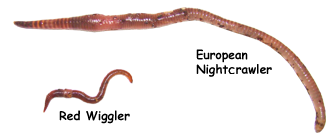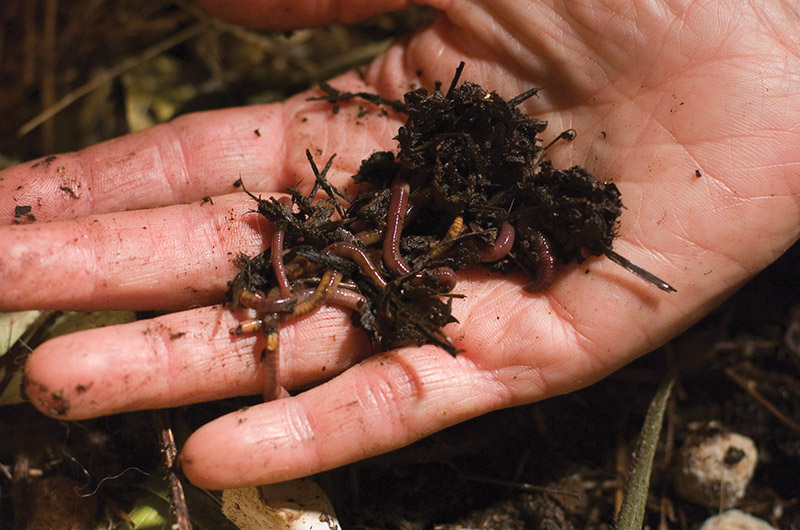Organic Composting with Red Wiggler Worms - Increase Your Yard's Development
Organic Composting with Red Wiggler Worms - Increase Your Yard's Development
Blog Article
Red Wiggler Worms Demystified: Unlocking the Secrets of Vermiculture for Greener Living and Nutrient-Rich Dirt
In the realm of lasting techniques for enhancing soil quality and promoting eco-conscious living, red wiggler worms play a critical yet frequently overlooked duty. These simple animals have the amazing ability to change organic waste right into nutrient-rich castings that work as a powerful natural plant food. By delving right into the world of vermiculture, one can reveal a myriad of benefits that prolong far past conventional composting methods. Understanding the details of taking care of these worms, optimizing their atmosphere, and harnessing their spreadings can result in a greener way of life and much healthier soil for plants to thrive.
The Duty of Red Wiggler Worms
Red Wiggler worms play a vital function in composting systems by successfully damaging down raw material into nutrient-rich castings. These ravenous eaters eat a selection of organic products, such as cooking area scraps, yard waste, and paper products. As they feed, the worms' digestive system processes break down the natural matter into a fine, dark, and nutrient-dense product recognized as worm castings or vermicompost.
The castings produced by Red Wiggler worms are extremely useful for dirt health and plant growth. They are abundant in necessary nutrients like nitrogen, potassium, and phosphorus, which are important for sustaining healthy plant growth. In addition, worm spreadings contain advantageous microorganisms and enzymes that assist improve soil structure, increase water retention, and enhance nutrient uptake by plants.
Advantages of Vermicomposting

It enhances soil framework, boosts soil aeration, and raises soil wetness retention. Vermicompost likewise enriches the soil with crucial nutrients like potassium, nitrogen, and phosphorus, promoting plant development and general dirt fertility.
In addition, vermicomposting assistances sustainable gardening practices by providing a all-natural and chemical-free choice to artificial fertilizers. Red Wiggler Worms. This eco-friendly strategy not only enhances the soil however likewise helps in reducing reliance on dangerous chemicals, advertising a greener and extra lasting way of horticulture
Establishing a Worm Bin
When developing a worm container for vermicomposting, correct arrangement is crucial to guarantee the success of the composting process. The initial step in establishing up a worm container is choosing an appropriate container. This can be a plastic bin or wooden box that offers adequate area for the worms to relocate around and has proper drainage holes to avoid waterlogging. Next, a bed linen material such as shredded newspaper, cardboard, or coconut coir must be added to the container. This bedding provides a comfortable atmosphere for the worms and assists keep wetness levels.
After adding the bed linen, introduce the red wiggler worms to the container. It is suggested to start with a handful of worms and progressively enhance as they increase. The worms ought dig this to then be given with food scraps such as vegetables and fruit peels, coffee grounds, and eggshells. It is important to stay clear of adding meat, dairy, oily, or salted foods to avoid attracting bugs and producing undesirable odors.
Consistently keep an eye on the moisture degrees and temperature in the worm container to make certain optimum problems for the worms. With proper arrangement and maintenance, the worm bin will effectively transform natural waste into nutrient-rich garden compost for your plants and garden.
Gathering Worm Spreadings
To effectively collect nutrient-rich worm spreadings from your vermicomposting system, a systematic harvesting technique is important. When it comes time to collect the worm castings, there are a few crucial steps to follow to make sure an effective process. Stop including fresh food scraps to one side of the worm container for a pair of weeks prior to gathering. This encourages the worms to move sideways with fresh bedding and food, making it much easier to dig the castings from the opposite side.

Troubleshooting Common Issues
Determining and resolving usual obstacles that might develop throughout the vermicomposting procedure is essential for maintaining a healthy and effective worm bin. One usual problem that vermicomposters encounter is overfeeding. Adding excess food scraps can bring about an accumulation of wetness and acidity in the worm container, possibly damaging the worms. To stop this, feed the worms in small amounts, making sure that the food scraps are appropriately damaged down before adding more. Another concern is unpleasant odors rising from the worm bin. Foul smells suggest anaerobic problems, commonly triggered by overwatering or insufficient ventilation. To treat this, change the moisture degrees by including dry bed linens products like shredded newspaper or cardboard and rise aeration by transforming the bed linen frequently.
Furthermore, if the worm population is declining or the worms show up undesirable, it can be because of ecological stressors such as extreme temperature levels or pH levels. Keeping an eye on these elements and making essential changes is vital for the health of the worms. By troubleshooting these typical concerns immediately, vermicomposters can ensure a effective and smooth vermicomposting process you could try here while maintaining a growing worm populace.

Conclusion
In final thought, red wiggler worms play a critical function in vermiculture by breaking down natural issue right into nutrient-rich soil. Setting up a worm container is necessary for successful vermiculture, and harvesting worm spreadings supplies important compost for horticulture.
As they feed, the worms' digestion processes damage down the organic matter right into a penalty, dark, and nutrient-dense product recognized as worm castings or vermicompost.
The castings created by Red Wiggler worms are highly advantageous for dirt health and wellness and plant growth. Including excess food scraps can lead find out here now to an accumulation of moisture and level of acidity in the worm bin, possibly hurting the worms.Additionally, if the worm populace is declining or the worms show up unhealthy, it can be due to environmental stress factors such as extreme temperature levels or pH levels. Setting up a worm container is vital for effective vermiculture, and gathering worm spreadings offers beneficial compost for horticulture.
Report this page